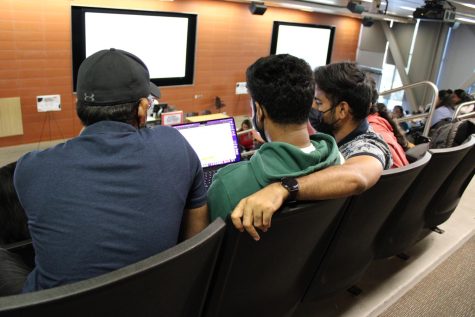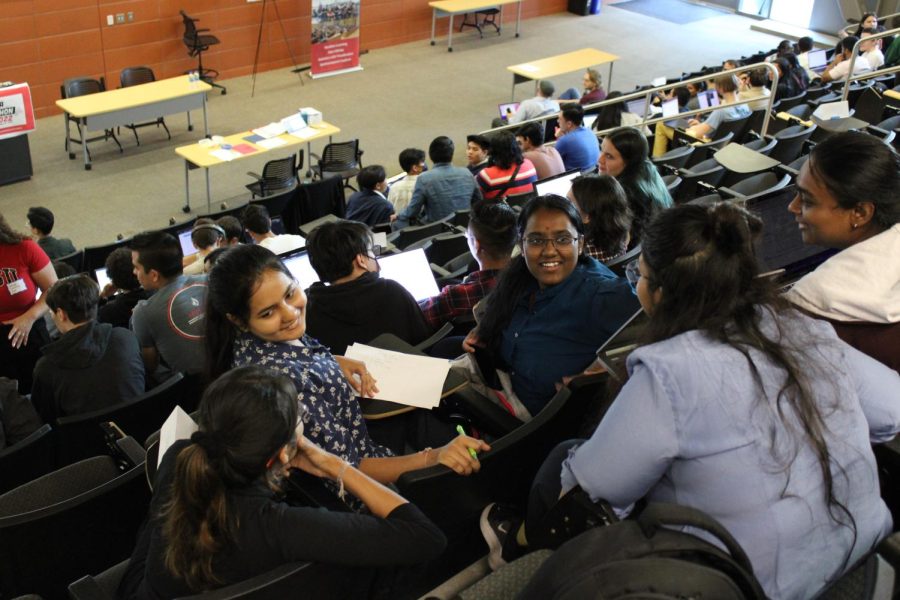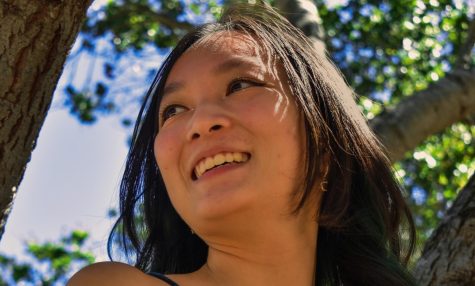San Diego State University hosted the Big Data Hackathon on Oct. 8 and Oct. 15 in hopes of inspiring students to tackle and create solutions for real world problems.
Taking place biennially, the Big Data Hackathon has a theme: students from SDSU (and Imperial Valley), community colleges and high schools in San Diego working together to think of real world solutions to the issues arising within the healthcare industry. Past themes involved water conservation, crime, disaster response, public health and smart living.
“It brings together students from across campus and from across disciplines to think through potential ideas to help solve issues in the community here in San Diego,” said Amy Schmitz Weiss, Journalism professor and Co-coordinator.
The event allows students to pitch and plan out ways to improve the community. Money is awarded to the best overall projects, and this year first prize was $3,000.
Student teams work together to make apps, websites, platforms and technologies they feel will help the issues at hand. The hackathon gives participants experience with entrepreneurship teamwork and allows them to make real world change, according to Schmitz Weiss.
The sponsor of the hackathon this year was Sharp HealthCare. One of the biggest issues in healthcare right now is the gap in health equity across different populations, explained Kelly Ko, the director of Data Governance and Interoperability at Sharp Healthcare. With that comes accessibility, Sharp Business managers, Rachael Evans and Teddy Lee, explained. An example Evans and Lee discussed regarding healthcare issues involves scheduling appointments. Evans and Lee said it can take months to get an appointment, so having some kind of technology that could mitigate this process would be helpful.
Between Oct. 8 and Oct. 15, participants planned and created apps along with other products. The products range from apps that could offer care suggestions for diabetes and rashes, to bracelets that could be scanned and give first responders insight to their patient’s personal identification and any pre-existing medical conditions they may have.

First place was awarded to team 122, which was composed of five SDSU students who won $3,000.
Over the duration of the Hackathon, team 122 created “cenos.ai,” which provides automated patient screening and a healthcare dashboard — this helps healthcare workers serve patients who are in dire need. The platform also solves issues involving the difficulties of scheduling appointments, and it provides convenience for patients to get help from healthcare workers.
Second place of $2,000 went to a team named “Tagtap,” who created a medical device that could be worn by a patient and scanned by first responders to give important identification information. The device is suitable for patients who have impared verbal communication. Allowing first responders to identify who the patient is even if they have difficulties communicating.
Third place went to the Miracosta Computer Science for the Common Good team, who won $1,500 for creating “My Health SDSU,” an app that informs members of the SDSU community about health-related outbreaks on campus.
Winning third place meant a lot to the Miracosta Computer Science for the Common Good team. “Getting third place is already great in itself, but the fact that we’re the first people to win an award in computer science at MiraCosta; we’re putting our names in the history books,” said Kasara Farsoudi, a Miracosta freshman and team leader.
Fourth place went to a team belonging to the University of California, San Diego called the “LA Rejects,” who won $900 for their creation of an app that allows community members to stay informed on medical and community-based issues.
The student response to the Big Data Hackathon event was positive as many attendees were happy they participated.
“We learned so much about startups and entrepreneurship,”said Dylan Fitzpatrick, a third-year student at SDSU and member of developing ‘cenos.ai.’ “And just (by having) the one week that we had to build this, I would say that was the most fulfilling part.”









